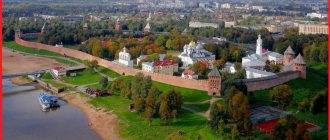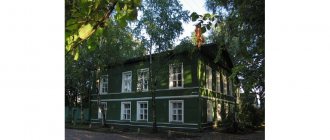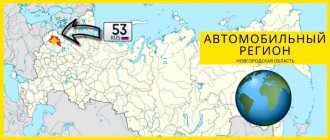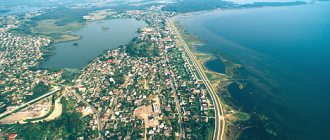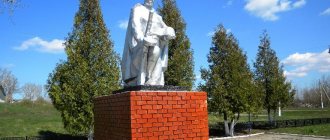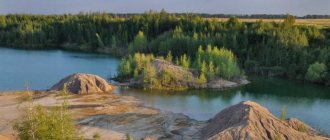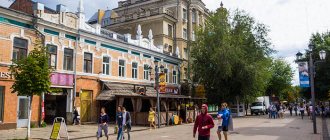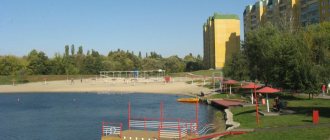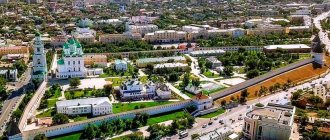City in Novgorod Oblast, Russia
| Malaya Vishera Malaya Vishera | |
| Town[1] | |
| Welcome sign at the entrance to Malaya Vishera | |
| Coat of arms | |
| Location of Malaya Vishera | |
| Malaya Vishera Location of Malaya Vishera Show map of Russia Malaya Vishera Malaya Vishera (Novgorod region) Show map of Novgorod region | |
| Coordinates: 58°51′N 32°14'E / 58.850°N Latitude 32.233°E / 58.850; 32.233Coordinates: 58°51′N 32°14'E / 58.850°N Latitude 32.233°E / 58.850; 32.233 | |
| A country | Russia |
| Federal subject | Novgorod region[1] |
| Administrative region | Malovishersky district[1] |
| City of district significance | Malaya Vishera[2] |
| Based | 1843 |
| City status from | 1921 |
| Height | 65 m (213 ft) |
| Population (2010 Census)[3] | |
| • Total | 12,461 |
| • Estimate (2018)[4] | 10,602 (-14.9%) |
| Administrative status | |
| • Capital from | Malovishera district[1], town of district significance Malaya Vishera[2] |
| Municipal status | |
| • Municipal district | Malovishersky municipal district[5] |
| • Urban village | Malovisherskoye urban settlement[6] |
| • Capital from | Malovisherskoye municipal district[5], Malovisherskoye urban-type settlement[6] |
| Timezone | UTC + 3 (MSK [7]) |
| Postal code(s)[8] | 174260, 174262 |
| OKTMO I WOULD | 49620101001 |
Malaya Vishera
(Russian: Malaya Vishera) is a town and administrative center of Malovishera District in Novgorod Oblast, Russia. Population: 12,461 (2010 Census);[3]14,182 (2002 Census);[9]15,647 (1989 Census).[10]
Story
Malaya Vishera in the 1860s
The name of the city comes from the Malaya Vishera River, and a tributary from the Vishera River. It was founded in 1843 as a building Moscow - st. The St. Petersburg Railway (opened in 1851) began passing through the modern city.[ citation needed
] At that time it was part of the Krestetsky district of the Novgorod province.
On February 24, 1918, Malovishera district was founded and Malaya Vishera became its residence.[11] In 1921, Malaya Vishera received city status.[ citation needed
]
In August 1927, the districts were abolished, and on October 1, 1927, the Malovishersky district was formed. administrative center in Malaya Vishera.[12] The Novgorod Governorate was also abolished, and the area became part of the Novgorod Okrug of the Leningrad Region.[12] On July 23, 1930, the districts were abolished, and the districts were directly subordinated to the region.[12]
During World War II, from October 23 to December 22, 1941, Malaya Vishera was occupied by German troops.[13] It became the eighth Soviet city liberated by Soviet troops in 1941, and the first not subsequently recaptured.[14]
On July 5, 1944, Malovishersky District became part of the newly formed Novgorod Region and has remained there ever since.[15]
Malaya Vishera
(Novgorod region)
OKATO code:
49220501
Founded:
1843
City since:
1921 City of district subordination (Malovishersky district, Novgorod region)
Center:
Malovishersky district
Telephone code (reference phone)
| 81660***** | 36-00-9 |
Deviation from Moscow time, hours:
0
Geographic latitude:
58°51′
Geographic longitude:
32°13′
Altitude above sea level, meters:
65 Sunrise and sunset times in the city of Malaya Vishera
Economy
Industry
In the past, the economy of Malaya Vishera depended on the glass factory, which began to experience serious difficulties in the 1990–2000s. Currently these are the forestry industry (including furniture production), food processing and tool production.[16]
Transport
Malaya Vishera railway station
In 1860, a train depot was opened in Malaya Vishera. Many long-distance trains (including Moscow–St. Petersburg) stop at this station. The station is also an important terminus for regional commuter trains from Okulovka, Volkhovstroy, and St. Petersburg.
Malaya Vishera is connected by roads with the M10 Highway and with Lyubytino. The M10 passes 40 km west of the city.
Map
| Malaya Vishera: maps |
Malaya Vishera: photo from space (Google Maps) Malaya Vishera: photo from space (Microsoft Virtual Earth)
| Malaya Vishera. Nearest cities. Distances in km. on the map (in brackets along roads) + direction. Using the hyperlink in the distance , you can get the route (information courtesy of the AutoTransInfo website) | |||
| 1 | Miracle | 43 (65) | NW |
| 2 | Proletarian | 55 () | SW |
| 3 | Velikiy Novgorod | 65 (87) | SW |
| 4 | Kirishi | 67 (117) | WITH |
| 5 | Sacrum | 68 (158) | YU |
| 6 | Lyubytino | 68 (89) | IN |
| 7 | Pankovka | 70 () | SW |
| 8 | Lyuban | 78 (96) | NW |
| 9 | Okulovka | 82 (187) | SE |
| 10 | Parfino | 103 (203) | YU |
| 11 | Tosno | 108 (126) | NW |
| 12 | Staraya Russa | 108 (183) | SW |
| 13 | Borovichi | 109 (150) | SE |
| 14 | Shimsk | 112 (134) | SW |
| 15 | Batetsky | 112 (150) | Z |
| 16 | Boksitogorsk | 115 (191) | NE |
| 17 | Tikhvin | 115 (205) | NE |
| 18 | Valdai | 115 (211) | SE |
| 19 | Nazia (Leningrad region) | 115 (214) | WITH |
| 20 | Volkhov | 118 (177) | WITH |
| 21 | Ulyanovka (Leningrad region) | 120 (140) | NW |
| 22 | Mga (Leningrad region) | 120 (154) | NW |
a brief description of
It is located on the swampy Priilmenskaya lowland, on the Malaya Vishera River (a tributary of the Volkhov). Railway station.
Territory (sq. km): 25
Information about the city of Malaya Vishera on the Russian Wikipedia site
Historical sketch
It arose in 1843 during the construction of the Nikolaev railway as a settlement at the Malaya Vishera station (opened in 1851). In 1860, a locomotive depot was built and one of the first technical schools in Russia was opened. Since 1871 the settlement.
Name by location on the river. Malaya Vishera, which after merging with Bolshaya Vishera forms the river. Vishera (right tributary of the Volkhov). Several etymologies of the hydronym have been proposed.
In 1896, the first telephone switch on Russian railways was installed at the station.
The town of Malaya Vishera since 1921
During the Great Patriotic War of 1941-45, the city was occupied by Nazi troops on October 24, 1941. It was liberated on November 20, 1941 during the Tikhvin operation.
Economy
In Malaya Vishera: factories - glass (electric vacuum glass, radio tubes), electromechanical. Wood harvesting and processing enterprises.
In the Malovishera region, grain crops, potatoes, vegetables, and perennial herbs are grown. They raise cattle, pigs, and sheep.
Deposits of limestone, marl, brick and fusible clays, glass sands. Peat and sapropel reserves.
Architecture, sights
The railway divides the city into 2 parts: the southern part is characterized by wooden one-story buildings, and the northern part is characterized by large-panel multi-story buildings.
In the village of Pekhovo, 40 km from Malaya Vishera, there is a wooden church from the 17th century.
In the villages of Znamenka, Posohovo, Kamenka there are estates from the 19th century.
| Population by year (thousands of inhabitants) | |||||||
| 1897 | 5.4 | 1989 | 15.6 | 2006 | 13.3 | 2015 | 11.6 |
| 1926 | 9.4 | 1992 | 15.4 | 2007 | 13.1 | 2016 | 11.3 |
| 1931 | 11.6 | 1996 | 15.0 | 2008 | 12.9 | 2017 | 11.0 |
| 1939 | 17.6 | 1998 | 14.8 | 2010 | 12.4 | 2018 | 10.6 |
| 1959 | 16.1 | 2000 | 14.7 | 2011 | 12.5 | 2019 | 10.4 |
| 1967 | 15 | 2001 | 14.5 | 2012 | 12.1 | 2020 | 10.3 |
| 1970 | 15.4 | 2003 | 14.2 | 2013 | 12.0 | 2021 | 10.2 |
| 1979 | 15.7 | 2005 | 13.7 | 2014 | 11.8 | ||
Excerpt characterizing Malaya Vishera
Having finished his second glass of punch, Napoleon went to rest before the serious business that, as it seemed to him, lay ahead of him the next day. He was so interested in this task ahead of him that he could not sleep and, despite the runny nose that had worsened from the evening dampness, at three o'clock in the morning, blowing his nose loudly, he went out into the large compartment of the tent. He asked if the Russians had left? He was told that the enemy fires were still in the same places. He nodded his head approvingly. The adjutant on duty entered the tent. - Eh bien, Rapp, croyez vous, que nous ferons do bonnes affaires aujourd'hui? [Well, Rapp, what do you think: will our affairs be good today?] - he turned to him. “Sans aucun doute, sire, [Without any doubt, sir,” answered Rapp. Napoleon looked at him. “Vous rappelez vous, Sire, ce que vous m'avez fait l'honneur de dire a Smolensk,” said Rapp, “le vin est tire, il faut le boire.” [Do you remember, sir, those words that you deigned to say to me in Smolensk, the wine is uncorked, I must drink it.] Napoleon frowned and sat silently for a long time, his head on his hand. “Cette pauvre armee,” he said suddenly, “elle a bien diminue depuis Smolensk.” La fortune est une franche courtisane, Rapp; je le disais toujours, et je commence a l'eprouver. Mais la garde, Rapp, la garde est intact? [Poor army! it has greatly diminished from Smolensk. Fortune is a real minx, Rapp. I've always said this and I'm starting to experience it. But the guard, Rapp, the guard is intact?] - he said questioningly. “Oui, Sire, [Yes, sir.],” answered Rapp. Napoleon took the lozenge, put it in his mouth and looked at his watch. He didn’t want to sleep; morning was still far away; and in order to kill time, no orders could be made anymore, because everything had been done and was now being carried out. – A t on distribue les biscuits et le riz aux regiments de la garde? [Did they distribute crackers and rice to the guards?] - Napoleon asked sternly. – Oui, Sire. [Yes, sir.] – Mais le riz? [But rice?] Rapp replied that he had conveyed the sovereign’s orders about rice, but Napoleon shook his head with displeasure, as if he did not believe that his order would be carried out. The servant came in with punch. Napoleon ordered another glass to be brought to Rapp and silently took sips from his own. “I have neither taste nor smell,” he said, sniffing the glass. “I’m tired of this runny nose.” They talk about medicine. What kind of medicine is there when they cannot cure a runny nose? Corvisar gave me these lozenges, but they don't help. What can they treat? It cannot be treated. Notre corps est une machine a vivre. Il est organise pour cela, c'est sa nature; laissez y la vie a son aise, qu'elle s'y defende elle meme: elle fera plus que si vous la paralysiez en l'encombrant de remedes. Notre corps est comme une montre parfaite qui doit aller un certain temps; l'horloger n'a pas la faculte de l'ouvrir, il ne peut la manier qu'a tatons et les yeux bandes. Notre corps est une machine a vivre, voila tout. [Our body is a machine for life. This is what it is designed for. Leave the life in him alone, let her defend herself, she will do more on her own than when you interfere with her with medications. Our body is like a clock that must run for a certain time; The watchmaker cannot open them and can only operate them by touch and blindfolded. Our body is a machine for life. That's all.] - And as if having embarked on the path of definitions, definitions that Napoleon loved, he suddenly made a new definition. – Do you know, Rapp, what the art of war is? - he asked. – The art of being stronger than the enemy at a certain moment. Voila tout. [That's all.] Rapp didn't answer. – Demainnous allons avoir affaire a Koutouzoff! [Tomorrow we will deal with Kutuzov!] - said Napoleon. - Let's see! Remember, at Braunau he commanded the army and not once in three weeks did he mount a horse to inspect the fortifications. Let's see! He looked at his watch. It was still only four o'clock. I didn’t want to sleep, I had finished the punch, and there was still nothing to do. He got up, walked back and forth, put on a warm frock coat and hat and left the tent. The night was dark and damp; a barely audible dampness fell from above. The fires did not burn brightly nearby, in the French guard, and glittered far through the smoke along the Russian line. Everywhere it was quiet, and the rustling and trampling of the French troops, which had already begun to move to occupy a position, could clearly be heard. Napoleon walked in front of the tent, looked at the lights, listened to the stomping and, passing by a tall guardsman in a shaggy hat, who stood sentry at his tent and, like a black pillar, stretched out when the emperor appeared, stopped opposite him. - Since what year have you been in the service? - he asked with that usual affectation of rough and gentle belligerence with which he always treated the soldiers. The soldier answered him. - Ah! un des vieux! [A! of the old people!] Did you receive rice for the regiment? - We got it, Your Majesty. Napoleon nodded his head and walked away from him. At half past five Napoleon rode on horseback to the village of Shevardin. It was beginning to get light, the sky cleared, only one cloud lay in the east. Abandoned fires burned out in the weak morning light. A thick, lonely cannon shot rang out to the right, rushed past and froze in the midst of general silence. Several minutes passed. A second, third shot rang out, the air began to vibrate; the fourth and fifth sounded close and solemnly somewhere to the right. The first shots had not yet sounded when others were heard, again and again, merging and interrupting one another. Napoleon rode up with his retinue to the Shevardinsky redoubt and dismounted from his horse. The game has begun. Returning from Prince Andrei to Gorki, Pierre, having ordered the horseman to prepare the horses and wake him up early in the morning, immediately fell asleep behind the partition, in the corner that Boris had given him. When Pierre fully woke up the next morning, there was no one in the hut. Glass rattled in the small windows. The bereitor stood pushing him away. “Your Excellency, your Excellency, your Excellency...” the bereitor said stubbornly, without looking at Pierre and, apparently, having lost hope of waking him up, swinging him by the shoulder. - What? Began? Is it time? - Pierre spoke, waking up. “If you please hear the firing,” said the bereitor, a retired soldier, “all the gentlemen have already left, the most illustrious ones themselves have passed a long time ago.” Pierre quickly got dressed and ran out onto the porch. It was clear, fresh, dewy and cheerful outside. The sun, having just broken out from behind the cloud that was obscuring it, splashed half-broken rays through the roofs of the opposite street, onto the dew-covered dust of the road, onto the walls of the houses, onto the windows of the fence and onto Pierre’s horses standing at the hut. The roar of the guns could be heard more clearly in the yard. An adjutant with a Cossack trotted down the street. - It's time, Count, it's time! - shouted the adjutant. Having ordered his horse to be led, Pierre walked down the street to the mound from which he had looked at the battlefield yesterday. On this mound there was a crowd of military men, and the French conversation of the staff could be heard, and the gray head of Kutuzov could be seen with his white cap with a red band and the gray back of his head, sunk into his shoulders. Kutuzov looked through the pipe ahead along the main road. Entering the entrance steps to the mound, Pierre looked ahead of him and froze in admiration at the beauty of the spectacle. It was the same panorama that he had admired yesterday from this mound; but now this entire area was covered with troops and the smoke of gunfire, and the slanting rays of the bright sun, rising from behind, to the left of Pierre, threw upon it in the clear morning air a piercing light with a golden and pink tint and dark, long shadows. The distant forests that completed the panorama, as if carved from some precious yellow-green stone, were visible with their curved line of peaks on the horizon, and between them, behind Valuev, cut through the great Smolensk road, all covered with troops. Golden fields and copses glittered closer. Troops were visible everywhere - in front, right and left. It was all lively, majestic and unexpected; but what struck Pierre most of all was the view of the battlefield itself, Borodino and the ravine above Kolocheya on both sides of it.
Cultural institutions[ | ]
- [30] Municipal budgetary cultural institution “Inter-settlement library system of Malovishera district”
- Museum of School No. 1
- Malovishera Regional Museum of Local Lore
The museum has an exhibition hall, expositions on the history of the formation of Malaya Vishera, and memorable places of the Malovishera district. Municipal budgetary cultural institution. Intersettlement Methodological Center for Folk Art and Cultural and Leisure Activities (MBUK MMTSNT and KDD) and its branch RDK “Svetlana”.
Notes
- ↑ 123
www.gks.ru/free_doc/doc_2016/bul_dr/mun_obr2016.rar Population of the Russian Federation by municipalities as of January 1, 2016 - ↑ 12
THE USSR. Administrative-territorial division of the union republics on January 1, 1980 / Compiled by V. A. Dudarev, N. A. Evseeva. - M.: Publishing house "Izvestia of the Soviets of People's Deputies of the USSR", 1980. - 702 p. — P. 180. - [www.golubinski.ru/history/otrechenie.htm Abdication of Nicholas II. Memoirs of eyewitnesses]
- Statistics of the Russian Empire. 1: Collection of information on Russia for 1884-1885. St. Petersburg, 1887, p. 20
- Populated areas of the Russian Empire with 500 or more inhabitants, indicating the total population present in them and the number of inhabitants of the prevailing religions, according to the first general census of 1897 / Rep. ed. N. A. Troinitsky. - St. Petersburg, 1905, p. 126
- ↑ 123
Cities of the USSR / NKVD of the RSFSR, Stat. Department. - M., 1927 - Bulletin of the Leningrad Regional Statistics Department. Vol. 20. 1928, April - June
- ↑ 1234567891011
www.MojGorod.ru/novgorod_obl/malavishera/index.html People's encyclopedia “My City”. Malaya Vishera - All-Union Population Census of 1937: General results. Collection of documents and materials - M., 2007, p. 68
- RGAE, f. 1562, op. 336, no. 1248, pp. 83-96
- TsGA SPb., f. 95, op. 6, no. 5, pp. 2—3
- [demoscope.ru/weekly/ssp/rus59_reg2.php All-Union Population Census of 1959. The size of the urban population of the RSFSR, its territorial units, urban settlements and urban areas by gender] (Russian). Demoscope Weekly. Retrieved September 25, 2013. [www.webcitation.org/6GDOghWC9 Archived from the original on April 28, 2013].
- [demoscope.ru/weekly/ssp/rus70_reg2.php All-Union Population Census of 1970 The size of the urban population of the RSFSR, its territorial units, urban settlements and urban areas by gender.] (Russian). Demoscope Weekly. Retrieved September 25, 2013. [www.webcitation.org/6GDOiMstp Archived from the original on April 28, 2013].
- [demoscope.ru/weekly/ssp/rus79_reg2.php All-Union Population Census of 1979 The size of the urban population of the RSFSR, its territorial units, urban settlements and urban areas by gender.] (Russian). Demoscope Weekly. Retrieved September 25, 2013. [www.webcitation.org/6GDOjhZ5L Archived from the original on April 28, 2013].
- [demoscope.ru/weekly/ssp/rus89_reg2.php All-Union Population Census of 1989. Urban population]. [www.webcitation.org/617x0o0Pa Archived from the original on August 22, 2011].
- [www.perepis2002.ru/ct/doc/1_TOM_01_04.xls All-Russian Population Census 2002. Volume. 1, table 4. Population of Russia, federal districts, constituent entities of the Russian Federation, districts, urban settlements, rural settlements - regional centers and rural settlements with a population of 3 thousand or more]. [www.webcitation.org/65AdCU0q3 Archived from the original on February 3, 2012].
- [www.gks.ru/bgd/regl/B09_109/IssWWW.exe/Stg/d01/tabl-21-09.xls Number of permanent population of the Russian Federation by cities, urban-type settlements and districts as of January 1, 2009]. Retrieved January 2, 2014. [www.webcitation.org/6MJmu0z1u Archived from the original on January 2, 2014].
- [novgorodstat.gks.ru/wps/wcm/connect/rosstat_ts/novgorodstat/resources/b00dff804edfeae3a933a93467c8ff84/Table+12.pdf All-Russian Population Census 2010. 12. Population of municipal districts, settlements, urban and rural settlements of the Novgorod region]. Retrieved February 2, 2014. [www.webcitation.org/6N5OGNTw6 Archived from the original on February 2, 2014].
- [www.gks.ru/free_doc/doc_2012/bul_dr/mun_obr2012.rar Population of the Russian Federation by municipalities. Table 35. Estimated resident population as of January 1, 2012]. Retrieved May 31, 2014. [www.webcitation.org/6PyOWbdMc Archived from the original on May 31, 2014].
- [www.gks.ru/free_doc/doc_2013/bul_dr/mun_obr2013.rar Population of the Russian Federation by municipalities as of January 1, 2013. - M.: Federal State Statistics Service Rosstat, 2013. - 528 p. (Table 33. Population of urban districts, municipal districts, urban and rural settlements, urban settlements, rural settlements)]. Retrieved November 16, 2013. [www.webcitation.org/6LAdCWSxH Archived from the original on November 16, 2013].
- [www.gks.ru/free_doc/doc_2014/bul_dr/mun_obr2014.rar Table 33. Population of the Russian Federation by municipalities as of January 1, 2014]. Retrieved August 2, 2014. [www.webcitation.org/6RWqP50QK Archived from the original on August 2, 2014].
- [www.gks.ru/free_doc/doc_2015/bul_dr/mun_obr2015.rar Population of the Russian Federation by municipalities as of January 1, 2015]. Retrieved August 6, 2015. [www.webcitation.org/6aaNzOlFO Archived from the original on August 6, 2015].
- taking into account the cities of Crimea
- [www.gks.ru/free_doc/doc_2016/bul_dr/mun_obr2016.rar Population of the Russian Federation by municipalities as of January 1, 2016. Table “31. Population of cities and towns by federal districts and constituent entities of the Russian Federation as of January 1, 2016.” RAR archive (1.0 MB)]
- [komitetkultury.wordpress.com/ Culture of the Malovishera region].
Population[ | ]
| Population | |||||||||
| 1885[4] | 1897[5] | 1917[6] | 1920[6] | 1923[6] | 1926[7] | 1931[8] | 1937[9] | 1939[10] | 1943[11] |
| 4076 | ↗4851 | ↗7287 | ↘7153 | ↘6932 | ↗9432 | ↗11 600 | ↗15 058 | ↗17 620 | ↘6852 |
| 1959[12] | 1967[8] | 1970[13] | 1979[14] | 1989[15] | 1992[8] | 1996[8] | 1998[8] | 2001[8] | 2002[16] |
| ↗16 109 | ↘15 000 | ↗15 381 | ↗15 724 | ↘15 647 | ↘15 400 | ↘15 000 | ↘14 800 | ↘14 500 | ↘14 182 |
| 2003[8] | 2005[8] | 2006[8] | 2007[8] | 2008 | 2009[17] | 2010[18] | 2011[8] | 2012[19] | 2013[20] |
| ↗14 200 | ↘13 700 | ↘13 300 | ↘13 100 | ↘12 920 | ↘12 627 | ↘12 461 | ↗12 500 | ↘12 140 | ↘11 998 |
| 2014[21] | 2015[22] | 2016[23] | 2017[24] | 2018[25] | 2019[26] | 2020[27] | 2021[1] | ||
| ↘11 789 | ↘11 601 | ↘11 297 | ↘11 015 | ↘10 602 | ↘10 371 | ↘10 253 | ↘10 161 | ||
As of January 1, 2022, in terms of population, the city was in 908th place out of 1,116[28]cities of the Russian Federation[29].
